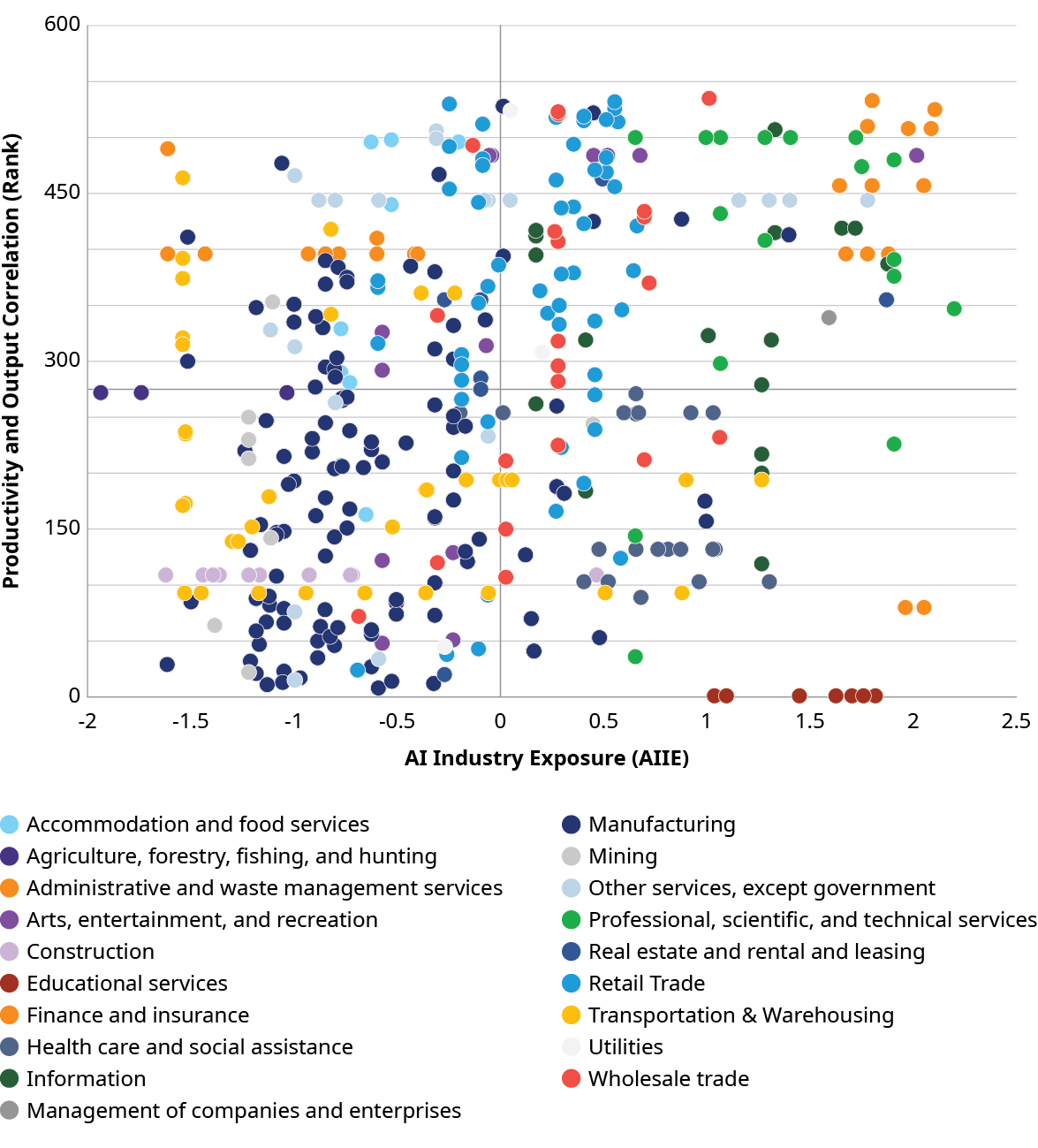


Accelerating technology transformation
Understanding AI’s Impact On Job And Industry Transformation
By Hunter Williams

In an intriguing twist of historical irony, the product that introduced generative AI to the world is aptly named ChatGPT. Within this context, GPT stands for "generative pre-trained transformer," a term for a class of large language models (LLMs). However, in the annals of science and technology, "GPT" has long held another meaning: "general purpose technology." These are innovations with applications so sweeping that they affect entire economies and civilizations. Examples of GPTs in this sense include the wheel, the printing press, the internal combustion engine, and the internet. The question now arises: will generative AI become another GPT, with similarly far-reaching implications and impacts? If so, how will it affect today's industries, and what can business leaders do to anticipate its impacts?
The impact of AI on various jobs and industries has been a topic of much discussion. Business leaders face hard decisions on how much to invest in deploying AI, where to focus the efforts, and how to manage the risks. For private equity investors and other financial sponsors, understanding how their portfolio is exposed to AI’s risk and opportunities is crucial so the right investment decisions can be made and the right guidance given to portfolio companies.
To simplify this complex topic, we believe two dimensions are worth considering: first, the degree to which AI is likely to impact a particular industry, and second, the extent to which total demand in an industry is likely to expand given greater productivity (and therefore lower costs) due to the deployment of AI.
How AI will impact an industry
The first dimension has been a topic of extensive academic research, examining the nature of jobs in an industry and their substitutability with AI. While many recent technological innovations have displaced lower earners or more blue-collar jobs – think self-order kiosks at fast food restaurants – generative AI's impact is expected to be greatest on middle-skilled, white-collar jobs. The effects of AI will also be felt in management structures: fewer middle managers will be needed if (for example) 10 AI-turbocharged programmers can soon do the work of 50 today. Some jobs have more “exposure” to the potential impacts of AI than others, and this can be extrapolated to the industry level based on the job mix in a given industry. To quantify these differences, we have leveraged the AI Industry Exposure (AIIE) index, created by Edward Felten, Manav Raj, and Robert Seamans in their academic research first in 2021 and updated it to reflect the impact of LLMs specifically in 2023. Their work found that janitorial services, meat processing, and coal mining (to take three examples) should see less impact from AI while accounting, commercial banking, and legal services will see far more.

But we also need to consider the second-order impacts on industries of “AI shock.” How long will enhanced productivity boost margins before being competed away? And what industries will grow most as a result of higher productivity and, therefore, lower costs? Mechanical weaving, for instance, did not just make clothes cheaper; it allowed demand for them to explode. Instead of owning just one set of work clothes and a "Sunday best," a typical worker could afford to have a different outfit each day, leading to today's closets full of clothes that may not even be remembered or worn.
AI-driven productivity gains and demand expansion
To estimate how "elastic" an industry is to growth from a positive productivity shock, Oliver Wyman examined the correlation between labor productivity and real output for each industry in the North American Industry Classification System (NAICS) hierarchy from 1987 through to 2019 (to avoid COVID noise). Ranked in descending order from highest to lowest correlation, a higher score on the y-axis can be interpreted as more potential for industry growth in total output due to higher productivity.
By plotting industries according to both their expected AI impact and their historical relationship with labor productivity, (Exhibit 2), valuable insights can be gleaned into what might be expected in different industries over the coming decades.
Exhibit 1: Industry-level potential impact of AI on productivity and total output

Source: Oliver Wyman analysis
Industries on the far left, ranging from dry cleaning to janitorial services, will experience limited direct AI impacts. For these businesses, other levers, such as scale effects and non-AI automation, will be more important for growth and profitability. Executives in these industries need not spend as much valuable time and effort considering the impact of AI, and investors can view them as having a lower “AI beta.” Those in the upper left may want to focus more on labor productivity improvements (but not from AI) while those in the lower left are likely to find greater returns from other productivity levers.
However, for businesses in industries on the right side of the matrix, the impact of AI needs to be carefully considered. In the upper right, for an industry where productivity and growth are highly correlated, greater labor productivity will lead, over time, to lower prices and greater demand for those products or services. The size of the pie could grow quickly. Businesses here need to focus on how to rapidly adopt AI to drive productivity and enjoy first-mover advantages, gaining market share and winning more than their fair share of the future growth to come.
Conversely, in the bottom right quadrant, where productivity and growth are less linked, productivity improvements and lower costs may end up shrinking the overall pie as the same amount of work is done with fewer resources. The positive productivity shock can be seen as a deflationary headwind to growth in these saturated or inelastic markets. Many education and healthcare services appear in this quadrant, suggesting AI may help to “bend the cost curve” in these industries that have suffered, for so long, from the Baumol effect — wages rising in jobs that have seen little to no increase in labor productivity, in response to increased salaries in other professions that have experienced significant productivity growth.
Exhibit 2: Industry-level impact by two digit NAICS classification

Source: Oliver Wyman analysis
Understanding how your industry or the industries of your portfolio could be affected by AI is one thing; figuring out what to do about it is another. At Oliver Wyman, we are supporting our clients in developing AI strategies, integrating generative AI into their operations, managing the related risks, and helping them redesign work to achieve the optimal combinations of AI, automation, and talent. And we have an interest in getting it right, given our industry (falling into “management, scientific and technical consulting services”) sits in the upper right. By staying ahead of the curve and anticipating the far-reaching implications of generative AI, businesses can position themselves for success in a rapidly changing world.







